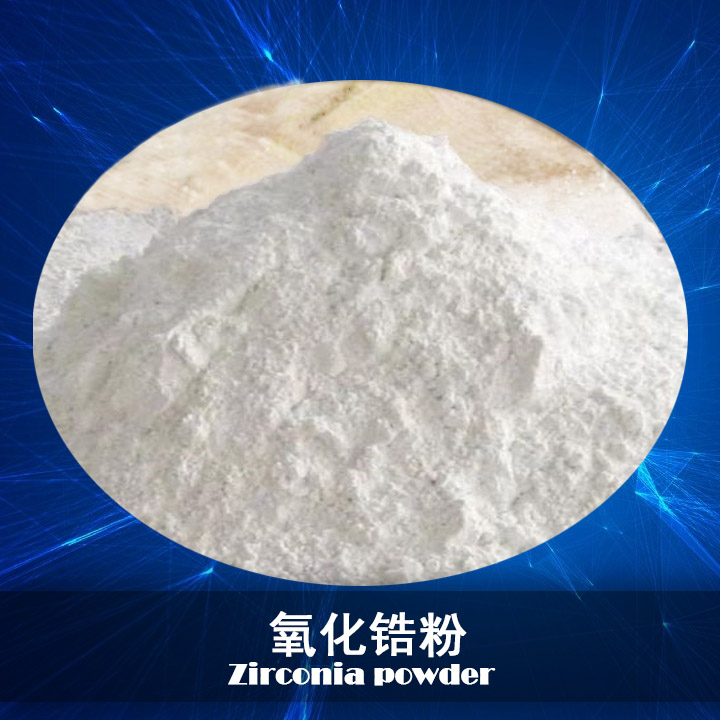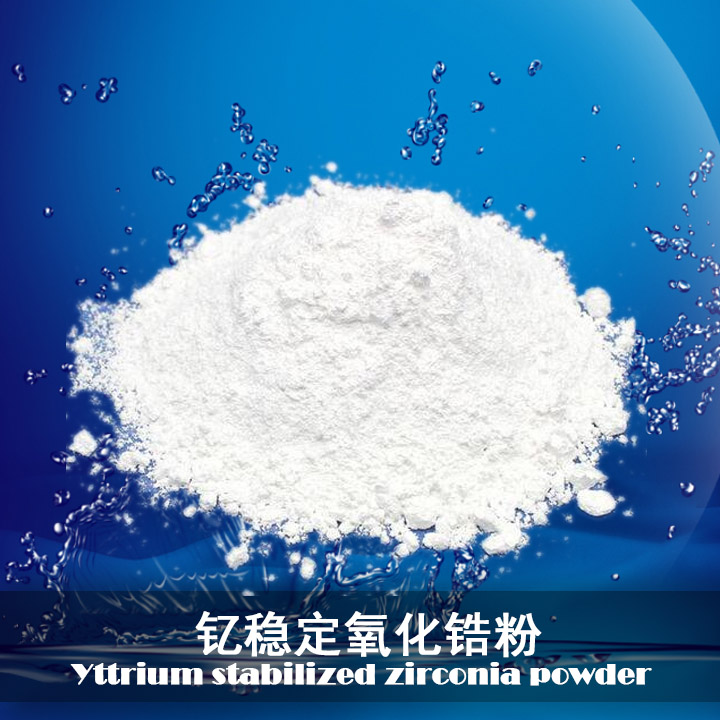
Shandong Sheng tai Zirconium Resources Co., Ltd.
Main product

Yttrium stabilized zirconia powder
Main model: 3\5\7\8mol
BET:3~45
D50-granularity: 0.4~5μm
Note: The ratio table, particle size, loose packing density and shrinkage rate are controllable.
CAS: 1314-23-4
Yttrium stabilized zirconia Customs Code: 28256000.90
Yttria-stabilized zirconia, also known as yttria-stabilized zirconia, yttria-stabilized zirconia, or yttria-stabilized zirconia, is a ceramic material that changes the phase transition temperature range of zirconia dioxide by adding yttria, resulting in a stable cubic crystal and tetragonal crystal at room temperature. Pure zirconia dioxide, when cooled from high temperature to room temperature, undergoes a phase transition from cubic crystal to monoclinic crystal at the phase transition temperature, causing a drastic change in volume, resulting in microcracks in the sintered product and often being unsuitable for use. Zirconia dioxide does not exist in cubic crystal phase (fluorite crystal structure) at room temperature, but by adding other oxides, the temperature range in which cubic crystal phase can be stably present can be greatly increased. Stabilized zirconia dioxide is called stabilized zirconia.
Technical parameter
| code | appearance | ZrO2 (%) | φ/nm | BET m2/g | CP | Product features and applications |
| JA-TAP-3mol | White powde | 94.7 | 50— | 12-15 | _ | 5.3% yttrium stable, 3Y partially stable, mainly used for each Structural ceramics, dental materials, spraying materials |
| JA-TAP-5mol | White powde | 91.5 | 50— | 12-15 | _ | 8.5% yttrium stable, 5Y stable, mainly used in various Functional ceramics, oxygen sensors, etc |
| JA-TAP-7mol | White powde | 86.5 | 50— | 12-15 | _ | 13.5% yttrium stable, 7Y fully stable for a variety of applications Functional ceramics, oxygen sensor, electronic burning support plate, etc |
| JA-TAP-8mol | White powde | —— | 47— | —— | _ | 8Y fully stable for plasma spraying |
Yttria-stabilized zirconia material introduction: Pure zirconia has a monoclinic crystal phase at room temperature, which transforms into a tetragonal crystal phase at about 1173°C and a cubic crystal phase at 2370°C, and becomes a liquid phase at 2690°C. Monoclinic crystal phase (phase transition temperature: 1173°C) Tetragonal crystal phase (phase transition temperature: 2370°C) Cubic crystal phase (melting point/solidification point: 2690°C) Liquid Pure zirconia undergoes a phase transition from cubic to monoclinic when it cools down from high temperature to room temperature, causing the finished product to have micro-crack due to the violent change in volume. Such products are often not suitable for use. Zirconia does not exist in cubic crystal phase (fluorite crystal structure) at room temperature, but by adding other oxides, the temperature range in which cubic crystal phase can be stabilized can be greatly increased. Stabilized zirconia with doped phase stabilizers is called stabilized zirconia (stabilized zirconias). Applications of Yttria-stabilized Zirconia: 1. Yttria-stabilized zirconia can be used in high-strength, high-toughness wear-resistant products: mill lining, cutting tools, drawing dies, hot extrusion dies, nozzles, valves, rolling balls, pump parts, and various sliding parts. 2. Functional ceramics, structural ceramics: electronic ceramics, biological ceramics 3. Piezoelectric elements. Oxygen sensors. Large-capacity capacitors; 4. Synthetic gemstones: grinding materials 5. Yttria-stabilized zirconia can also be used as refractory materials: electronic ceramic firing support boards, refractory materials for melting glass and metallurgical metals; its applications in high-tech fields are expanding. 6. After being modified with silane, the nanometer ZrO2 particles can significantly improve the flexural strength of the ZrO2/PMMA composite material when the addition amount is 3.0%.
Column navigation
Main product
Contact information
Contact number: +86 18769613001
Email: 1163881862@qq.com
Wechat: 18769613001
Address: Binzhou City, Shandong Province, Boxing county pure Liang development zone, China




